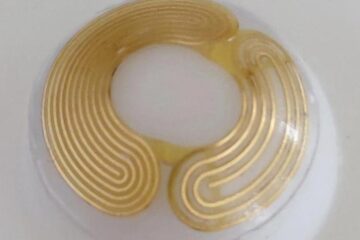Novel bacterial strains clear algal toxins from drinking water

Blooms of blue green algae (cyanobacteria) are found in both fresh and salt water throughout the world. They produce toxins called microcystins which are released into the water and are easily ingested by animals and humans by drinking, swimming or bathing in contaminated water.
Once in the body the toxins attack liver cells causing acute and chronic poisoning. Conventional methods for water treatment such as sedimentation, sand filtration, flocculation and chlorination do not remove microcystins.
The researchers at Robert Gordon's University have identified more than ten bacterial strains capable of metabolizing microcystins, breaking them down into harmless non-toxic materials. The bacteria, Arthrobacter sp, Brevibacterium sp and Rhodococcus sp were able to break down six commonly occurring microcystins. Six of the strains were incubated in river water with variants of the toxin to simulate natural conditions; all six strains were able to degrade the microcystins.
The costs of advanced water purification strategies are beyond most of the world's population,” said Mr Welgama, “Using bacteria to remove microcystins from water provides a reliable, cost-effective purification system, which does not involve any use of harmful chemicals or any other substances harmful to the environment”.
Media Contact
More Information:
http://www.sgm.ac.ukAll latest news from the category: Life Sciences and Chemistry
Articles and reports from the Life Sciences and chemistry area deal with applied and basic research into modern biology, chemistry and human medicine.
Valuable information can be found on a range of life sciences fields including bacteriology, biochemistry, bionics, bioinformatics, biophysics, biotechnology, genetics, geobotany, human biology, marine biology, microbiology, molecular biology, cellular biology, zoology, bioinorganic chemistry, microchemistry and environmental chemistry.
Newest articles

An epigenome editing toolkit to dissect the mechanisms of gene regulation
A study from the Hackett group at EMBL Rome led to the development of a powerful epigenetic editing technology, which unlocks the ability to precisely program chromatin modifications. Understanding how…

NASA selects UF mission to better track the Earth’s water and ice
NASA has selected a team of University of Florida aerospace engineers to pursue a groundbreaking $12 million mission aimed at improving the way we track changes in Earth’s structures, such…

‘Smart’ contact lenses could someday enable wireless glaucoma detection
Most people with early-stage glaucoma don’t know they have it, even though early treatment is key to reducing vision loss. While detecting a subtle increase in eye pressure helps doctors…





















